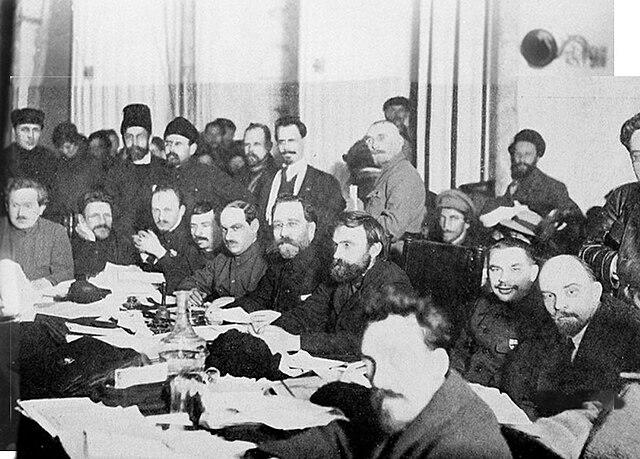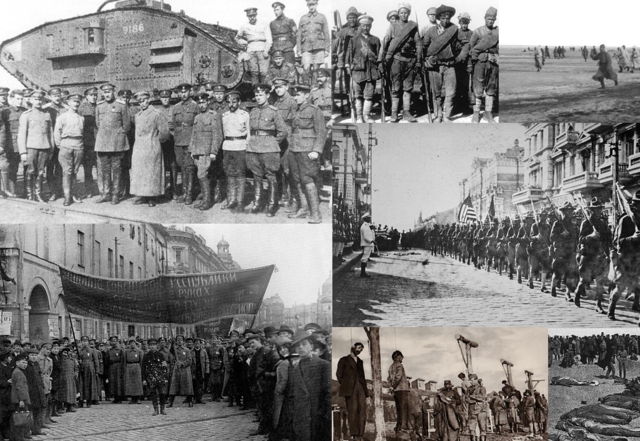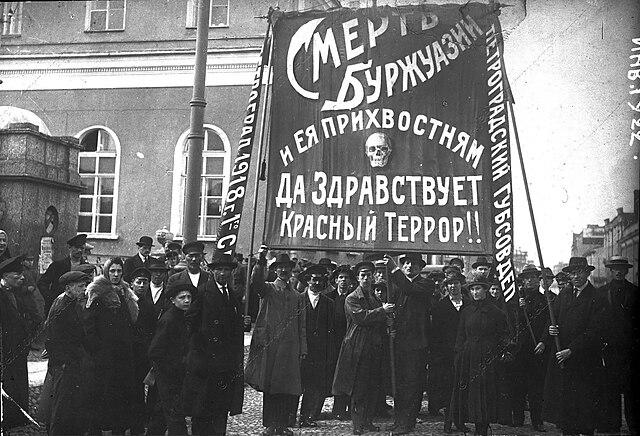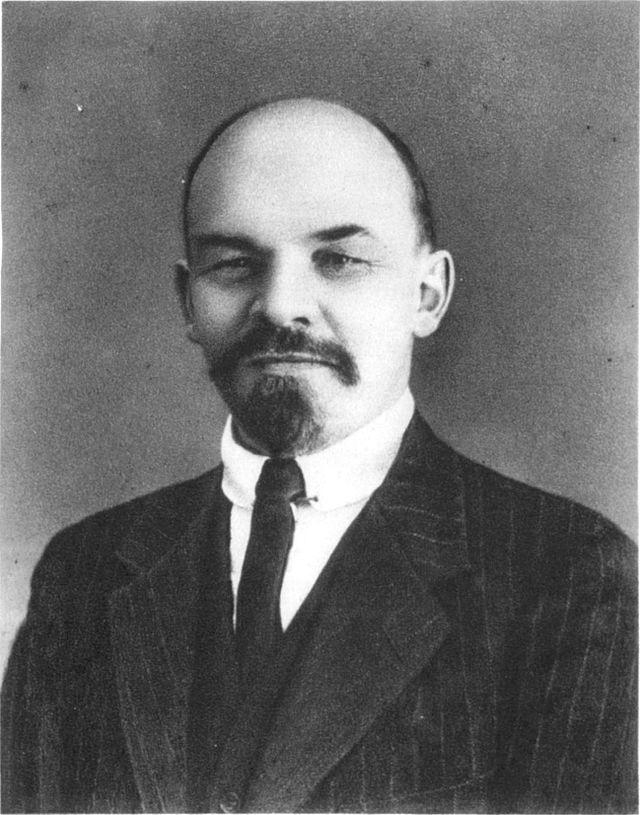Chapters
- How Did the Bolsheviks Establish One-Party Control?
- Why Did Russia Withdraw from the First World War?
- What Sparked the Civil War and How Did It Unfold?
- What Was the Red Terror?
- What Were the Economic and Social Changes Under Bolshevik Rule?
- How Did Foreign Relations Shape the Soviet Union's Early Years?
- How Did Lenin's Rule Evolve by 1924?
- Conclusion
How did the Bolsheviks ascend to power, transforming Russia and leaving a lasting impact on the world? From the dramatic aftermath of the October Revolution to establishing a one-party rule, we take a closer look at the pivotal events and decisions that shaped this period, including everything from Russia's strategic withdrawal from World War I to the innovative New Economic Policy Lenin would create. Join us as we explore the strategies and challenges the Bolsheviks encountered on their path to forging a new Soviet Union.

How Did the Bolsheviks Establish One-Party Control?
In the wake of the October Revolution of 1917, the Bolsheviks faced the monumental task of securing power across Russia, a nation that was facing massive upheaval at the time. To gain one-party control, the Bolsheviks had to plan carefully and implement a series of calculated steps. Their first course of action would come in January 1918, when they would make the decision to shut down the Constituent Assembly.
Although many people were unhappy about the previous government, this move still came as a shock to people who viewed it as a rightful representation of the people’s will, having been chosen through elections in 1917. However, the Bolsheviks believed that the Soviets, which were councils made up of hard-working soldiers and everyday men, were the better option for representing the people’s democracy. Now in a position to shape the future of Russia, the Bolsheviks set out to establish a government where they had total control and no direct opposition.

Why Did Russia Withdraw from the First World War?
Long before they had ousted the previous government from power, the Bolsheviks had firmly promised the people that they would withdraw Russia from World War 1, which was severely draining Russian resources and leaving much of the populace poor and destitute.
In March 1918, the Bolshevik government would directly act on this promise, signing the Treaty of Brest-Litovsk which effectively pulled them out of the conflict for good. However, this decision did not come without sacrifices, as part of the agreement involved surrendering a significant amount of territory to the central powers. These regions included parts of present-day Poland, Ukraine, and the Baltic states, among others. The loss of these territories angered many Russians, who saw the decision as a blow to the country's national pride. However, it also benefited the Bolsheviks, who could now focus primarily on implementing their socialist agenda back at home.
What Sparked the Civil War and How Did It Unfold?
The Russian Civil War was a major moment in Russia’s history that took place between 1918 to 1922. The war would erupt as a result of a combination of different factors, including deep political, social and economic frustrations that had slowly been building up over time. Stepping into power in the midst of a Russia that had long been divided, the Bolsheviks would inadvertently create a bunch of enemies among the conservative “whites” and other nationalist groups, as well as other socialists who felt betrayed by the Bolsheviks's methods and goals.
During this tense period, Leon Trotsky would become a central figure by leading and playing a role in the creation of the Red Army - which was instrumental in eventually leading the Bolsheviks to victory. Sadly, one of the darkest moments of the war would come when Nicholas II and his family were executed.
Essentially, this decision was made in order to send a clear message to the enemy - there was no turning back to the old monarchy system and the past was dead. After many brutal battles and sieges, the Reds would eventually come out on top over the Whites due to their better strategic decisions and control over crucial industrial centres.

What Was the Red Terror?
The Red Terror was yet another dark period of the Bolshevik's reign. In 1918, the Bolshevik government would start a campaign of political repression and executions which were carried out by the Cheka, a Soviet State organisation tasked with investigating anti-bolshevik sentiments.
But what was the reason for this move? The catalyst for the Red Terror would come as a result of escalating dissent and assassination attempts on Bolshevik leaders, including an almost fatal assassination attempt on Lenin himself.
In response to this, the Bolsheviks would unleash a wave of terror to intimidate and eliminate not just those actively opposing the regime but also those suspected of disloyalty to the regime. This brutal approach instilled a sense of fear across the nation and set a grim tone for how Russia would continue to be ruled in later years.

(Credit: Wikimedia Commons)
What Were the Economic and Social Changes Under Bolshevik Rule?
During the Bolshevik's rule, Russia would go through a period known as War Communism, which had a profound impact on both the economy and society as a whole. For many, this time was a tough one to live through, with industrial output falling sharply and the countryside suffering due to the forced collection of crops, which led to famine and widespread unhappiness among the people. Eventually, this dissatisfaction would result in a series of revolts between 1920 and 1921, with the most serious of these being the Tambov Rebellion and the Kronstadt Uprising.
In response to this turmoil, Lenin would introduce the New Economic Policy (NEP), which aimed to dial back some of the previous socialist policies and reintroduce private business and some elements of a market economy. The idea was to help the economy recover by allowing some freedom in trading and farming, which was also intended to win back the support of the peasants who had been alienated by earlier policies.
How Did Foreign Relations Shape the Soviet Union's Early Years?
During the Russian Civil War, the Bolsheviks would find themselves extremely isolated on the global stage. The main reason for this was due to the intervention of the Allied Powers who supported groups like the Whites who directly opposed the Bolsheviks and the Reds.
As a result of this, the Bolsheviks would create the Comintern, or Communist International in 1919. The Comintern's mission was to encourage communist revolutions around the world, which ended up pushing Western powers even further away due to fears of global communist expansion. One incident that highlighted the growing mistrust between the Soviet Union and Western powers was the Zinoviev letter. This document, which later on turned out to be a fake, supposedly showed Soviet plans to stir up revolution in Britain and caused widespread outrage in the west.
How Did Lenin's Rule Evolve by 1924?
By 1924, Lenin had begun to struggle with serious health issues, leading him to become more and more sidelined from the day-to-day governance of the country. Overall his years in power had fundamentally changed Russia into a state which was neither fully socialist nor capitalist, but a sort of mix between the two.
Additionally, the introduction of the NEP had also created a whole plethora of new challenges, such as increased inequality and the birth of a new class of weather peasants called kulaks and traders called NEPmen. From here, Lenin's declining health and eventual death in January would cause a power vacuum within the Soviet leadership, setting the stage for a fierce struggle for succession where Joseph Stalin would eventually emerge the victor.

Conclusion
Simply put, the Bolsheviks' rise to power involved many major decisions like shutting down the Constituent Assembly and launching the New Economic Policy (NEP). Their time in power would see things like the end of Russia's involvement in World War I, a devastating Civil War, and the harsh and brutal measures of the Red Terror. They navigated complex international relations while trying to build a new Soviet society. Under Lenin's leadership, Russia would eventually transition towards a unique blend of socialism and capitalism. However, after Lenin’s death in 1924, a fierce struggle for succession would begin.









